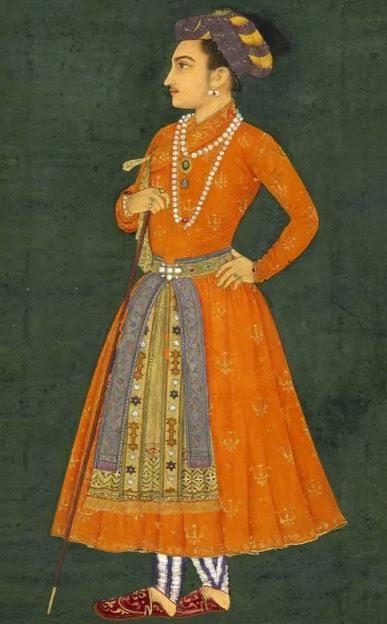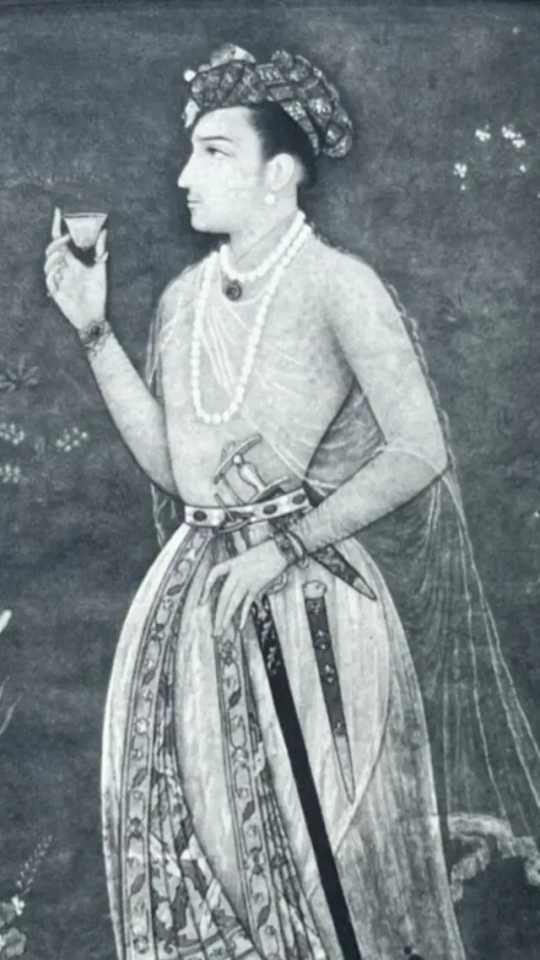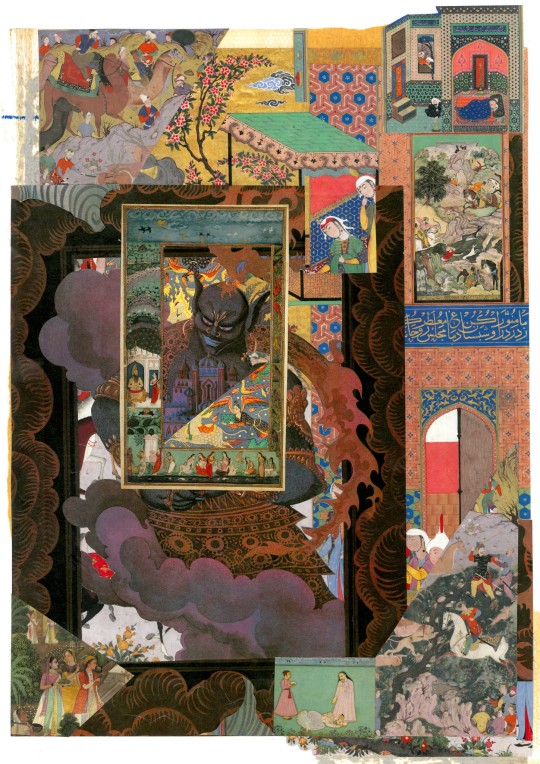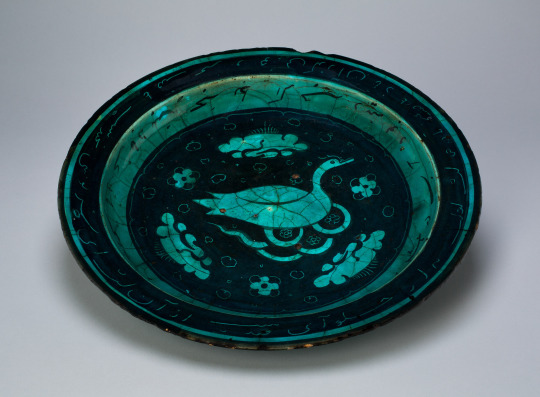#timurids
Explore tagged Tumblr posts
Text
I've been reading a histrographical book about early 1400s Iran recently, and within it, I've already stumbled upon three insane historical stories of just random people.
1. Amir Chaqmaq Shami, major administrative official under and advisor to Shah Rukh Timurid. The book says that we have many contradicting stories on his origins.
Then goes on to say that the most plausible one is that he's from Egypt (which was under the Mamluk Sultanate at the time) and fled all the way to Central Asia before just. Linking up with Shah Rukh during the First Timurid Succession Crisis and ending up in his service.
2. After Timur died, his main treasurer was accussed of embezzlement after it was found that there was 2,000 tumens (the currency) missing. This encouraged his son to study accounting, and after some time, his son demonstrated in front of Shah Rukh how the original evidence that had gotten his father convicted had made a major mathematical error and the actual missing count was 200 tumens. Shah Rukh was so impressed that he pardoned the father and employed both in the Imperial Diwan.
3. A Sayyid (Zayn al-'Abadin) was imprisoned by Timur during his conquests of Iran. However, after Zayn showed Timur a Qu'ran he had presumably copied whilst in prison, Timur was so impressed that he pardoned the man, employed him, and the man's son would also work in administration.
(The book is 'Power, Politics, and Religion in Timurid Iran' by Beatrice Forbes Manz, btw)
15 notes
·
View notes
Text
History memes #57

Context: Although Afghanistan is perceived as unconquerable, multiple empires, mainly Persian ones, have been successful in occupying what we would now consider Afghanistan
#funny humor#history memes#history#funny memes#funny#humor#meme humor#afghanistan#persian empire#ancient greece#mughal#british empire memes#british empire#Persian dynasties#ancient india#india#timurid empire#timurids
7 notes
·
View notes
Text
10 notes
·
View notes
Text
As I have found after a quick search, Iskandar Sultan had a keen interest in culture and arts, but his career was short: he was defeated by his uncle, captured, blinded, and everntually executed at the age of 31 (in 1415). I don't think that his astrologer had predicted any of these things...

The horoscope of the Persian Timurid ruler Iskandar Sultan, 1411. This is the only surviving individual illuminated horoscope from medieval Islam. Al-Mizan (Libra) is at 3 o'clock in the circle of zodiac signs.
8K notes
·
View notes
Text

Tāǧ as-Salmānī. Šams al-ḥusn: eine Chronik vom Tode Timurs bis zum Jahre 1409 (1956) https://www.avetruthbooks.com/2023/10/tag-as-salmani-sams-al-husn-eine-chronik-vom-tode-timurs-bis-zum-jahre-1409-1956.html
#Farsprovince#HistoricalsourcesinPersian#HistoryofAzerbaijan#HistoryofTurkicPeoples#HistoryofUzbekistan#QaraQoyunlu#Shiraz#TajadDinasSalmani#Timurids
0 notes
Text

A page from Anthology of Persian Poetry, Timurid, c. 1450, made of ink, gold leaf, opaque watercolor, silver leaf, book bound by leather. MET
#persia#persian poetry#persian art#persian history#iran#iran art#persian literature#islamic#islamic world#islamic culture#islamic history#timurid#timurid empire#illuminated manuscript#miniature painting
808 notes
·
View notes
Text






Mausolées de Shah-i-Zinda - Samarkande (2) (3) (4) (5) (6) by Jeanne Menjoulet
#1990s#mausoleum#islamic architecture#timurid architecture#necropolis#tiles#people#uzbekistan#samarkand
50 notes
·
View notes
Text
#ManuscriptMonday :

“Solomon takes advice from the animals”
from partial copy of Lights of Canopus (Anvar-i Suhayli) by Husayn Va`izi Kashifi (d. 1504-5), painting inscribed to Dhanu; Agra, Mughal India, c. 1595-1600.
Detached folio, ink, colours & gold on paper, Persian text in nasta`liq script with painting on recto.
Chester Beatty In 04.74
“Solomon was known for his great wisdom, and for his ability to speak with all creatures. One day, he had the opportunity to drink the water of life, and to live forever. Hesitating, he decided first to take advice from the animals and birds. They all gathered at his court, and discussed the great decision. The heron advised the king not to choose immortality. There was only enough water for one person, the bird said, so if Solomon were to drink it, then he would outlive everyone he loved.
This folio is from a copy of a highly-regarded Persian text, written by Husayn Va`izi Kashifi (d.1504-05), a preacher and scholar at the Timurid court in Herat (modern Afghanistan): <Lights of Canopus (Anvar-i Suhayli), a reworking of the animal fables Kalila and Dimna (Kalila wa Dimna)>. His patron was Amir Shaykh Suhayli, whose last name is punningly inserted into the new title. Writing in a sophisticated court style, Kashifi composed an updated version of these lively animal fables, which have a long transmission history going back to Persian, Arabic and Sanskrit texts. This manuscript was made in Mughal India, and features 96 paintings (mounted separately).”
#animals in art#birds in art#bird#painting#birds#mammal#mammals#Indian art#Mughal art#Timurid art#animal fables#Solomon#Chester Beatty#16th century art#court art#book art#illuminated manuscript#Lights of Canopus#Islamic art#Kalila and Dimna#Husayn Va`izi Kashifi#Manuscript Monday
34 notes
·
View notes
Text









a few mid timurid dynasty (akbar-aurangzeb) prince serves ... .they hate to see you in a gorg brightly colored outfit before ur mustache has even grown in ... I wish falconry was a global phenomenon in the year 2024
#art history#medieval art#medieval history#medieval manuscripts#early modern art#mughal history#mughal empire#mughal art#akbar i#jahangir#shahryar mirza#dara shikoh#shah jahan#aurangzeb#murad bakhsh#jai singh i#maybe other guys i forgot also#fashion history#timurid dynasty
36 notes
·
View notes
Text
the fact that Iron Lord Timur is so analogous to Tamerlane is killing me. what do you mean that timur, the one who sought SIVA so desperately that the equivalent of his family was worried about him, eventually found it only for SIVA to destroy him and his people before the Iron Lords could see the fruits of their labor? what do you mean tamerlane established the timurid empire and launched a renaissance for his people only for it to begin declining after his death? tamerlane wanted to restore the mongol empire like timur wanted to restore humanity. don't even get me Started on the fact that the Memory of Timur has the three annulets that were symbols of the Timurid empire. like. bro
#ominous talks about destiny#before you say anything i know im reading too far into this but timur tthey could never make me hate you#btw this is not me saying oooo yeah the timurid empire did nothing wrong#no the empire did lots bad. so did tamerlane. they killed an insane amount of people which Iron Lord Timur would NOT have done#but i mean hey maybe thats another parallel bc SIVA knocked out all of the iron lords except saladin and efrideet and u could argue timur#was at fault for that if you reallyyyy wanted to#blah blah blah both of them hoped to create a better future (with different motivations) but instead destroyed it#MAN the parallels are fun to draw sometimes. i can connect dots that should never be connected
9 notes
·
View notes
Text
Got jumpscared by gay in the history book, folks.

1 note
·
View note
Text

Composition (on wishes and war) You can find prints of this and my other collages on inprnt here:
212 notes
·
View notes
Text
6 notes
·
View notes
Text

Inscribed Bowl with a Duck
Iran, Timurid dynasty (1370–1507), Late 15th century
The rule of the Timurids (1307-1507) brought increased economic and artistic interaction between Iran and China, and the ceramics produced during this time are strong examples of this exchange. This bowl has been attributed to the latter part of the Timurid dynasty and has also been referred to as Kubachi ware. Kubachi ware refers to a group of ceramics found in the town of Kubachi, which is located in modern-day Russia. Despite their place of discovery, these ceramics were not necessarily produced in Kubachi. Rather, they were most likely crafted at other centers known for their artistic production during the medieval period.
80 notes
·
View notes
Text

Ensar Macit. Timurlular zamanında Azerbaycan. Doktora tezi (2017) https://www.avetruthbooks.com/2023/10/ensar-macit-timurlular-zamaninda-azerbaycan-doktora-tezi-2017.html
#AqQoyunlu#Dissertations#EnsarMacit#GoldenHorde#HistoricalgeographyofAzerbaijan#HistoryofAzerbaijan#HistoryofTurkicPeoples#Jalayirids#QaraQoyunlu#Shirvanshahs#Timurids
0 notes
Text

The façade of one of the buildings of the Shah-i Zinda, Samarkand, Uzbekistan.
The Shah-i-Zinda Ensemble in Samarkand is a stunning necropolis comprising over 20 mausoleums and ritual buildings dating from the 11th to the 19th centuries. Its name, meaning “The Living King,” refers to a legend that Qutham ibn Abbas, cousin of the Prophet Muhammad, is buried there.
The complex developed over eight centuries and is divided into three sections—lower, middle, and upper—connected by arched domed passages known as chartak. The earliest structures date to the 11th–12th centuries, though most of the preserved architecture stems from the 14th–15th centuries, particularly during the time of Timur (Tamerlane) and his successors.
Photo: Poliorketes / Shutterstock
#uzbekistan#medieval#middle ages#tamerlane#timurid#timurid art#samarkand#central asia#silk road#timur#mongol#mongol history#turkic#turkic people#turk#islamic#islamic history#islamic art#islamic culture#medieval art#medieval architecture
86 notes
·
View notes